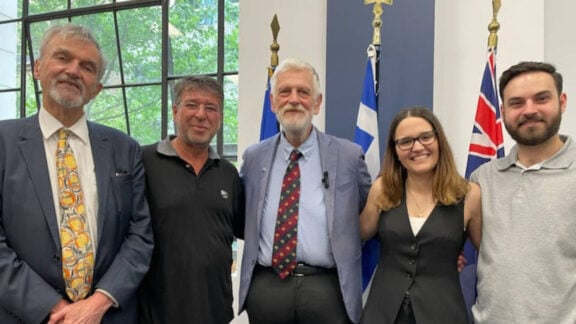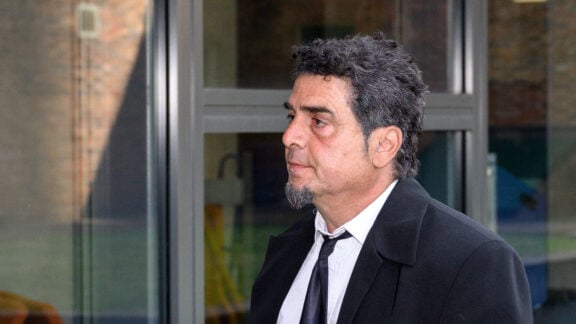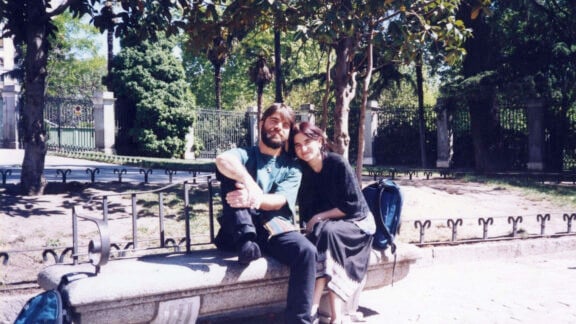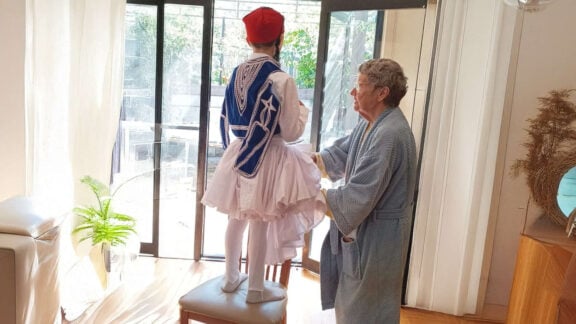Over the years I have travelled from North Africa and Central Asia to Europe, in order to study Greek historical sites and monuments. Being aware of the Indian and Hellenic connection of archaeological excavations and studies conducted at the Casa de Medusa in the historical town of Alter do Chão, known during the Roman period as Abelterium, in Portugal,
I reached Lisbon two days before the end of 2024; the decorations were a feast for the eyes indeed, and soon I was informed by Chief Archaeologist of Alter do Chão Jorge Antonio that he would arrive the next day in Lisbon for a detailed in-person interaction with me on this topic and would bring along with him maps and photos of the excavation site.
The next morning, relishing Pasteis de Nata and hot chocolate while looking at the beautiful red roofs of houses in the Alfama neighbourhood of Lisbon and the Tagus River beyond, I recollected what Strabo wrote about the region that is now Portugal, he mentions the existence of Greek colonies at the mouths of the Tagus, Douro, and Minho.
Soon I received the message of Antonio’s arrival, and the meeting was held at Cafe Nicola in the Rossio neighbourhood of Lisbon. The conversation focused on the Indian and Hellenic connection of Alter do Chão and how it can be utilised for strengthening relations between India, Greece, and Portugal. Here is a summary of what exactly has been found in Alter do Chão.
The mosaic was found at the House of the Medusa (Alter do Chão, Portugal) in 1954, during construction work on a municipal football pitch. It was first excavated in 1956 by Bairrão Oleiro and later by António Brazão in 1980 and 1982. António is the municipal archaeologist of Alter de Chão is the third archaeologist to excavate at this site.

He began excavating in April 2004 and identified the mosaic to be that of King Alexander and King Porus. The house of Medusa, so called because the Gorgon is depicted on Alexander’s shield, is a domus in Abelterium (Alter do Chão), a Roman town mentioned in Antoninus’ Itinerary. Medusa’s house was built in the second half of the 3rd century AD and the dining room with the Alexander and Porus mosaic was built inside the peristyle garden in the first half of the 4th century AD.
So far, the impluvium, a nymphaeum, rooms with mosaic floors and others in opus signinum, a peristylium with a garden in the centre surrounded by two corridors with mosaic floors have been identified in the house.
The Battle of Issus
According to Antonio, there are only three Roman mosaics in the world depicting Alexander: The Battle of Issus (House of the Faun in Pompeii, National Archaeological Museum of Naples, Italy), the Birth of Alexander (Baalbek, Archaeological Museum of Beirut, Lebanon) and the House of the Medusa (Alter do Chão, Portugal).
The mosaic found in Portugal is the only one preserved in the original place where it was found and is the only one depicting battle of Hydaspes. Antonio observes that Porus was a valorous king, in only two battles did Alexander face a king on the battlefield. Darius, at the Battle of Issus, but he fled in fear, and Porus, who unlike Darius continued to fight heroically on the elephant until the end of the battle. When the two kings met, Alexander asked Porus how he wanted to be treated and Porus replied, “Treat me like a king.”
Around Porus’ mouth are tesserae, which perhaps indicate his response to Alexander. Along with Alexander and Porus, Meroe a long-time friend of Porus and a soldier is also depicted, he was commissioned by Alexander to bring Porus to him and he was the translator for the two kings.
The battle took place on the eastern bank of the Hydaspes River. The bottom right-hand corner of the mosaic depicts a river god. He is holding a palm tree in his left hand, which indicates that he is an Asian deity. He is the deified river Hydaspes. The river god Hydaspes has his right arm over a vessel pouring water that flows towards the sea, or rather towards the Ocean, the deity in the opposite corner.
The god Ocean was always represented as an old man with a beard, big eyes, and crustacean tentacles on his head. Alexander had an enormous fascination with the Ocean, the great river that surrounded the world, the end of the Oikoumene.
The Battle of Hydaspes
Last year was the 2350th anniversary of The Battle of Hydaspes and the truce following it, between Alexander and Porus, which catalysed the inter cultural interaction between the Hellenes and Indians for centuries to come, that played an important role in the development of several disciplines like science, mathematics, philosophy and medicine by the Indo-Greeks; who were inspired by the intellectual achievements of Indian and Greek scholars of antiquity.

Alexander’s impact can be seen in different countries across the world. His conquests have been loadstars to the imperial aspirations of Julius Caesar and Napoleon among many others. Alexander’s greatest challenge was met in India.
He was unable to advance beyond India’s frontier regions towards the Gangetic belt, particularly Pataliputra (Greek name assigned by Megasthenes was Palibothra now known as Patna) then capital of the vast Nanda Dynasty, and later of the imperial Mauryas.
One reason given for Alexander’s retreat from India is the bravery of Porus, King of the Paurvas also known as Maharaja Parmananda Chand. Alexander faced Porus at the Battle of Hydaspes. Both gained a mutual and deep respect for each other. Porus showed commendable mettle, toughness and military prowess.
An honourable end
The Katoch Dynasty in India which ruled Kangra, in the Himalayas, claims descent from King Porus. Even though the depiction of Porus is not heroic in the mosaic because of the bias of the Romans towards the victor Alexander, but the fact that they chose to depict him shows the impact he created in the wider world, by the valour he displayed against the Greek leader who defeated super power of the ancient world Persia.
By deciding not to surrender without fighting, Porus ensured that he gets respected in wider Hellenic world and later Roman world as a brave warrior. Lot has been written about the expansion of Hellenic artistic influence in Europe, the Roman mosaic in Alter do Chão is an example of this with an Indian connection as well.
*Arunansh B. Goswami is Neos Kosmos India Correspondent as well as a legal advocate and historian who contributes travelogue and observations.







